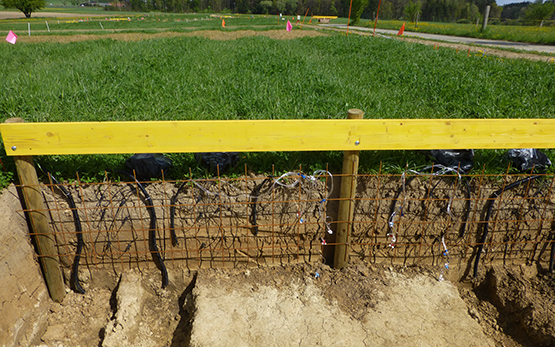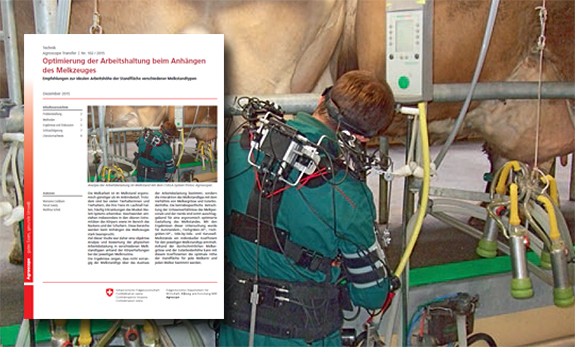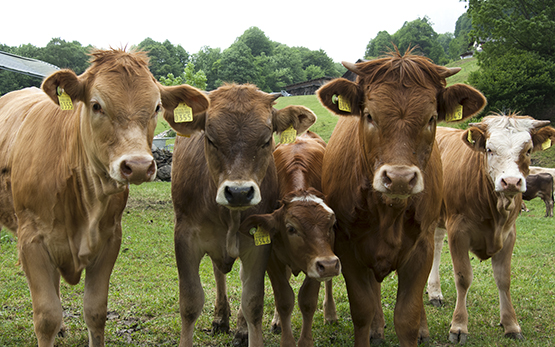Latsch A. J.
Digitalisierung im Pflanzenschutz - Was bringen die neuen Technologien?: Ergebnisse des Wirkungsmonitorings im Ressourcenprojekt "PFLOPF".
Dans: Pflanzenschutzoptimierung durch Digitalisierung. 7. Mai, Ed. Strickhof, Lindau. 2024, 1-14.
Latsch A. J.
Smart-N: Resultate und Erkenntnisse aus 2 Jahren On-Farm-Versuchen.
Dans: Beitrag der ortsspezifischen N-Düngung zum Absenkpfad. 15. Januar, Tänikon. 2024, 1-12.
Latsch A. J.
Projet de ressources PFLOPF : Économiser des produits phytosanitaires par les technologies numériques.
Dans: Journée phytosanitaire Grandes Cultures. 12 janvier, Bienne. 2024, 1-13.
autres langues: allemand
Latsch A. J., Kramer B.
Fumure par modulation intra-parcellaire : est-ce viable ?
Revue UFA, 12, 2023, 14-15.
autres langues: allemand
Latsch A. J.
Smart-N: Ortsspezifische Düngung zur Reduktion der Stickstoff-Überschüsse in der Praxis.
Dans: BDU-Herbsttagung. 15. November, Ed. Agridea, Olten. 2023, 1-15.
Latsch A. J.
Ressourcenprojekt PFLOPF: Pflanzenschutzoptimierung mit Precision Farming.
Dans: 5. News Spot Agridigital. 9. November, Ed. Chartagemeinschaft Digitalisierung, 2023, 1-12.
Latsch A. J., Anken T.
Standortangepasste N-Düngung zur Reduktion der Überschüsse: Smart-N und weitere AGS-Projekte.
Dans: Projektplattform. 31. Oktober, Tänikon. 2023, 1-16.
Anken T., Latsch A. J.
Characteristics of a spot sprayer for the treatment of Rumex obtusifolius in meadows.
Landtechnik, 78, (3), 2023, 139-151.
Latsch A. J.
Effizienter Pflanzenschutz durch moderne Technik.
E-Agil, 2, 2023, 3.
Anken T., Latsch A. J.
Schafft Spot Spraying nach dem Durchbruch auf Wiesen den Sprung in die BFF?
Dans: Pflanzenschutztagung. 13. Januar, Ed. Plattform Ackerbau, Biel. 2023.
Latsch A. J., Bauer M., Anken T.
Mit Heisswasser und Mikroflamme gegen Unkräuter in der Reihe: Neue Möglichkeiten für eine herbizidfreie Unkrautregulierung.
Der Pflanzenarzt, 6-7, 2022, 6-8.
Latsch A. J.
PFLOPF - Pflanzenschutzoptimierung mit Precision Farming.
Dans: Projektplattform. 19. April, Tänikon - Agroscope. 2022, 1-17.
Latsch A. J.
PFLOPF Wirkungsmonitoring: Resultate und Ausblick.
Dans: PFLOPF Teilnehmerworkshop Sonderkulturen. 16. März, Online-Workshop. 2022, 1-18.
Latsch A. J.
PFLOPF Wirkungsmonitoring: Resultate und Ausblick.
Dans: PFLOPF-Teilnehmerworkshop Ackerbau. 09. März, Online-Veranstaltung Ressourcenprojekt PFLOPF. 2022.
Latsch A. J., Anken T.
Mit schweren Maschinen beginnen: Permanente Fahrspuren sorgen für weniger Bodenverdichtung.
Landwirtschaft ohne Pflug, 12, 2021, 16-20.
Latsch A. J., Anken T.
Des voies permanentes réduisent le compactage des sols : Développement de systèmes culturaux ménageant les sols grâce au Controlled Traffic Farming (CTF).
Agroscope Transfer, 336, 2020, 1-6.
autres langues: allemand
Anken T., Latsch A. J., Zihlmann U.
Mais liebt gut strukturierte Böden.
Mais, 46, (4), 2019, 174-176.
Latsch A. J., Anken T.
Controlled Traffic Farming-light (CTF-light): Permanente Fahrgassen für alle schweren Maschinen.
Dans: SFF-Farmtage. 20.09.2019, Tänikon - SFF. 2019.
Latsch A. J., Anken T.
Soil and crop responses to a “light” version of Controlled Traffic Farming in Switzerland.
Soil & Tillage Research, 194, (November), 2019, 1-10.
Latsch A. J., Zihlmann U., Anken T.
Controlled Traffic Farming "light" - A way to improve soil structure?
Dans: 21st ISTRO conference. 25.09., Paris - International Soil Tillage Research Organization. 2018, 1-22.








